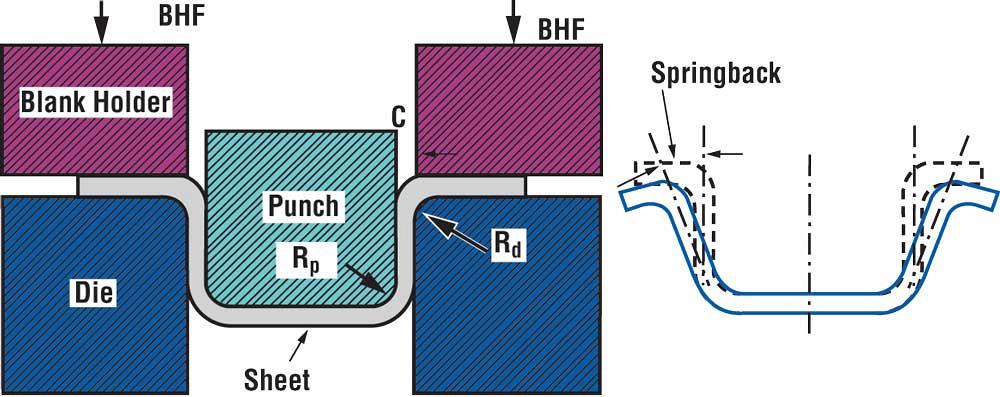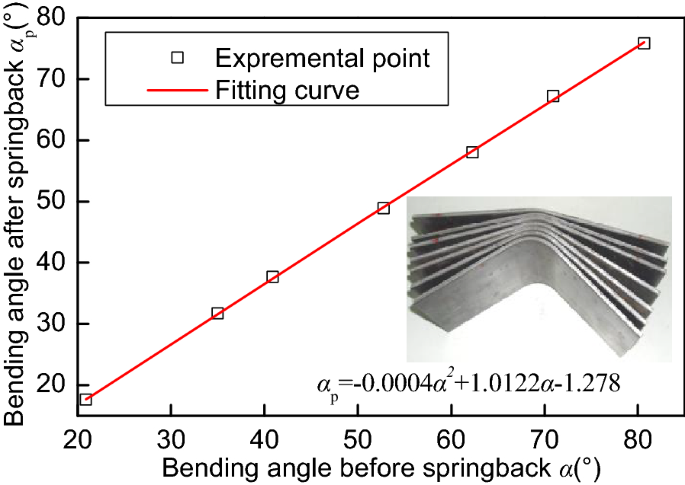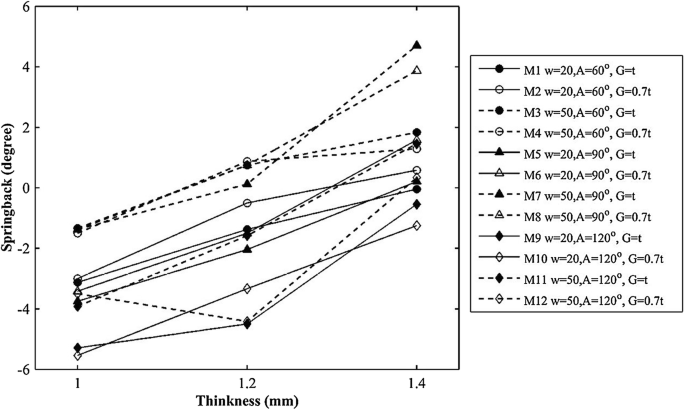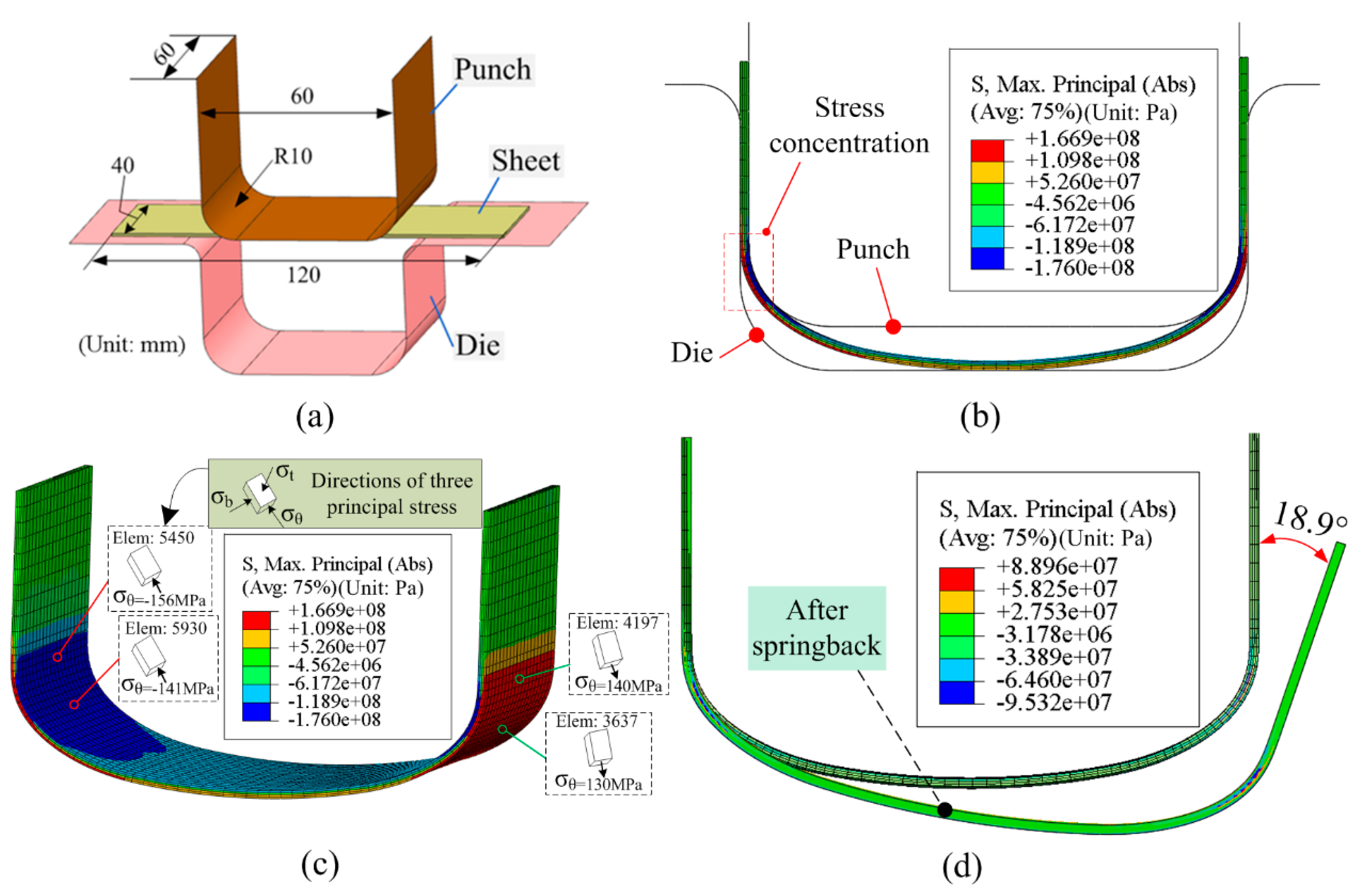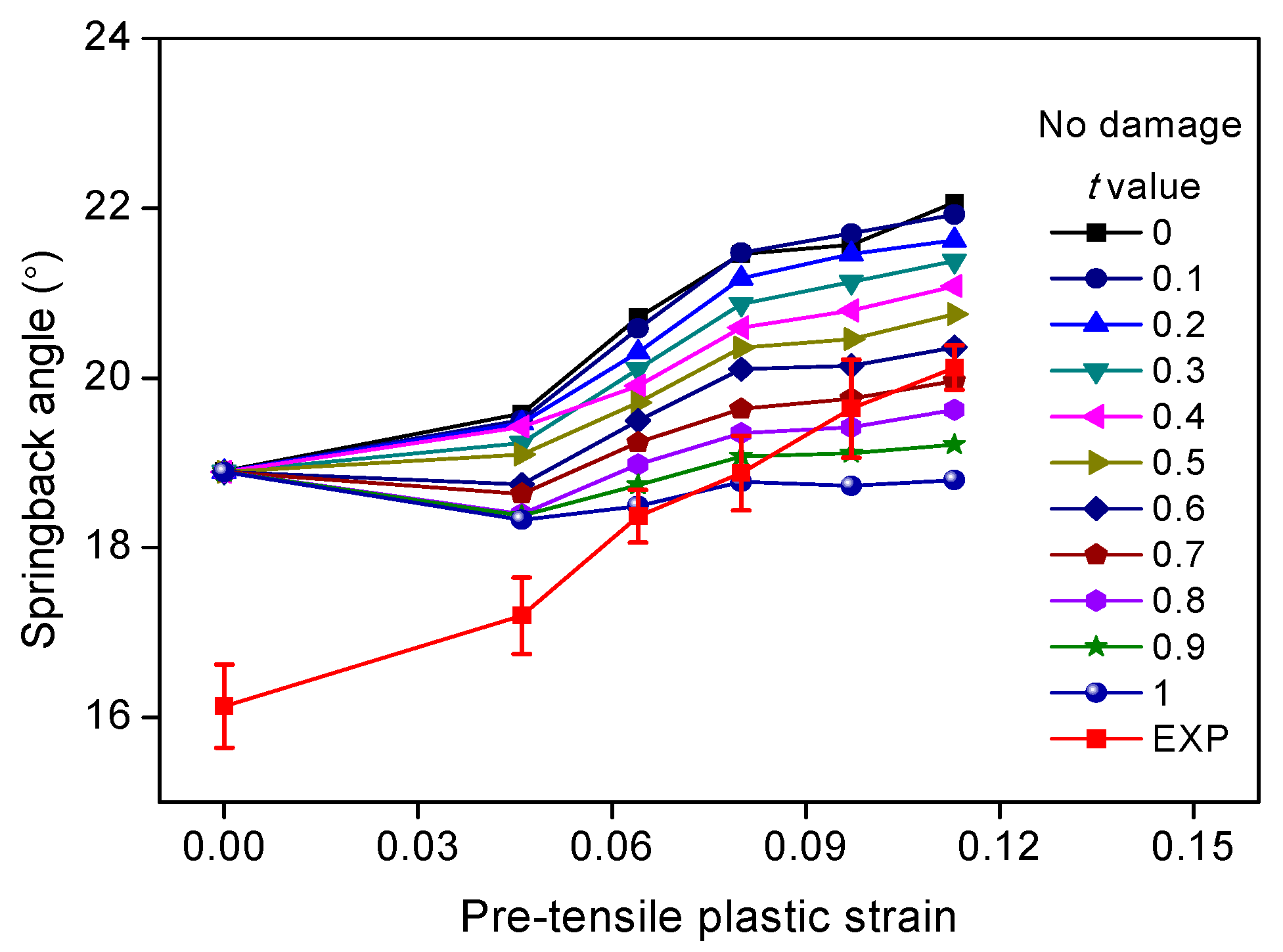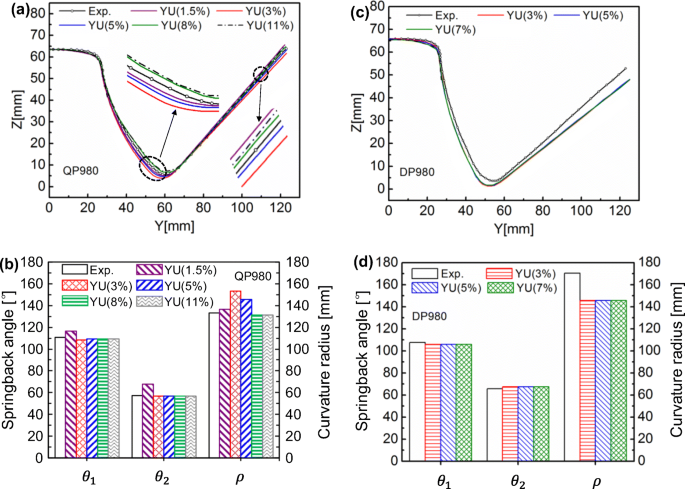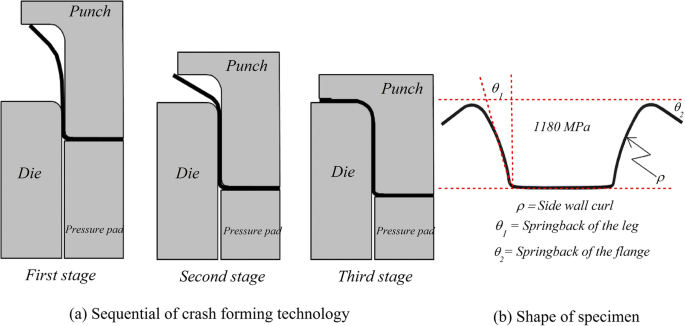Computer aided geometric design 2005 22 327 47 and the effect of tool modeling accuracy on springback simulation of a high strength steel sheet.
Finite element simulation of springback in sheet metal forming.
Finite element simulation of sheet metal forming is a well established tool which is used in industrial practice to evaluate geometrical defects caused by elastic springback.
2 the results showed negative springback for sheet tensions near the material yield stress contrary qualitatively to all experimental observations.
The first simulations used numerical parameters typical of those in forming analysis.
This phenomenon results in a deviation of the real product geometry from that defined in the design.
Fe finite element simulation of sheet metal forming is an important means to reduce the number of experiments and optimize the process 15 16 17 18.
Springback can be defined as an elastically driven change of shape of the deformed part upon removal of external loads.
Collard numerical simulation of springback in sheet metal forming.
A uniform mesh consisting of 150 plane stress elements for r 9 5 mm and five integration points through the thickness fig.
The simulation process can be divided.
Bending of sheet metal is one of the widely used industrial processes especially in the automobile and aircraft industries.
It is most popular for the manifold technical feasibilities in manufacturing high precision mass production and short processing time.
Proceedings of the eccomas 2000 complas vi european congress on computational methods in applied sciences and engineering barcelona spain 2000 cd rom.
Several physical parameters as well as numerical influence this phenomenon and its numerical prediction.
Most sheet metals undergo a combination of bending stretching unbending and reverse bending during the forming process accurate estimation of spring back in these industries is important demands in bend angles can be within a narrow range.
Finite element analysis fea is the most common method of simulating sheet metal forming operations to determine whether a proposed design will produce parts free of defects such as fracture or wrinkling.
Although finite element analysis fea is successful in simulating complex industrial sheet forming operations the accurate and reliable application of this technique to springback has not been widely demonstrated.
Modern automotive concepts demand a weight reduction by using high strength materials and excellent crash performance which requires innovative simulation techniques.
Sheet metal forming is widely used in automotive aviation packaging and household goods.








